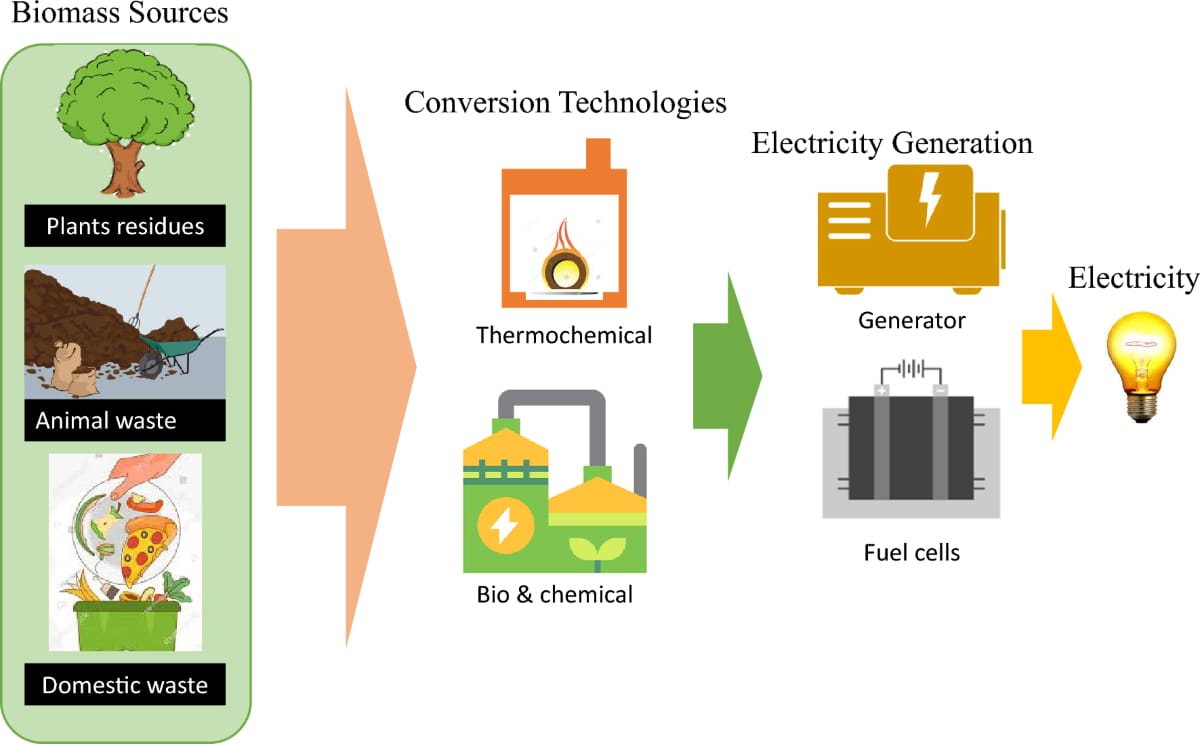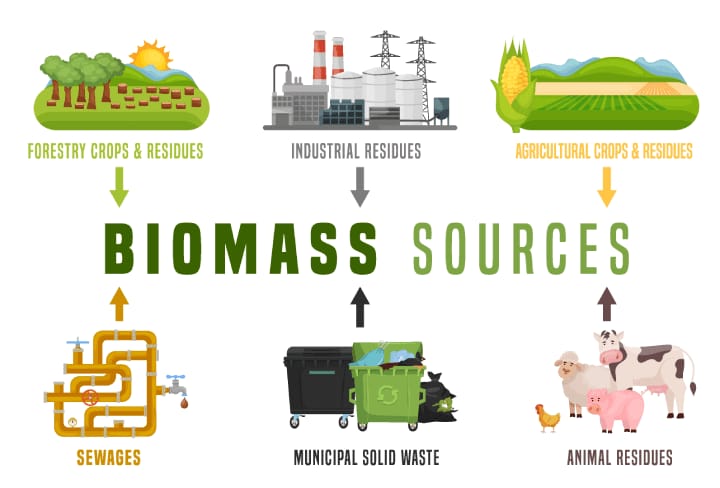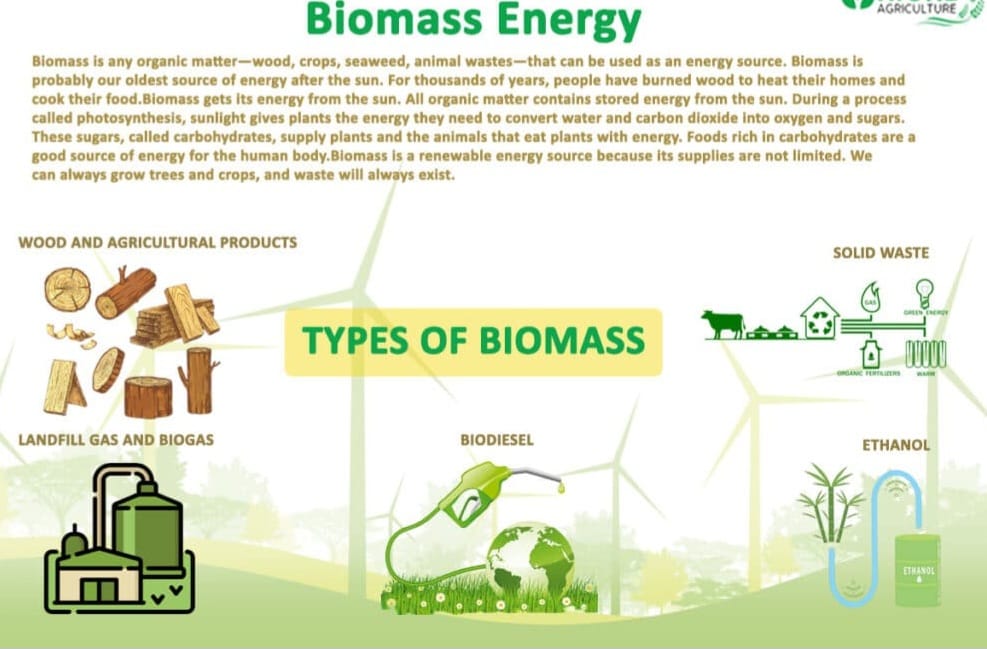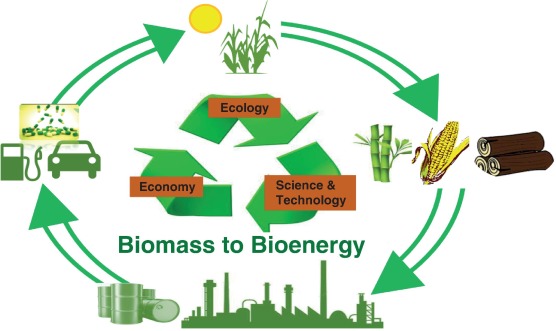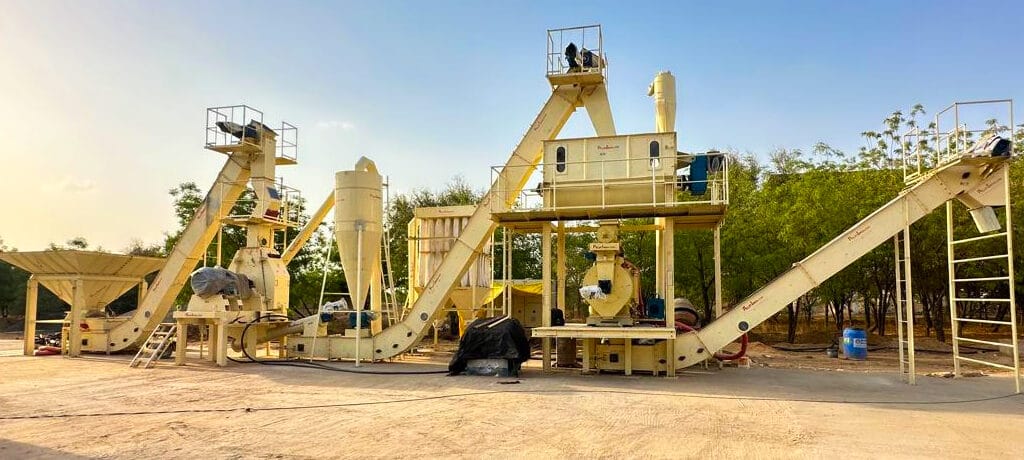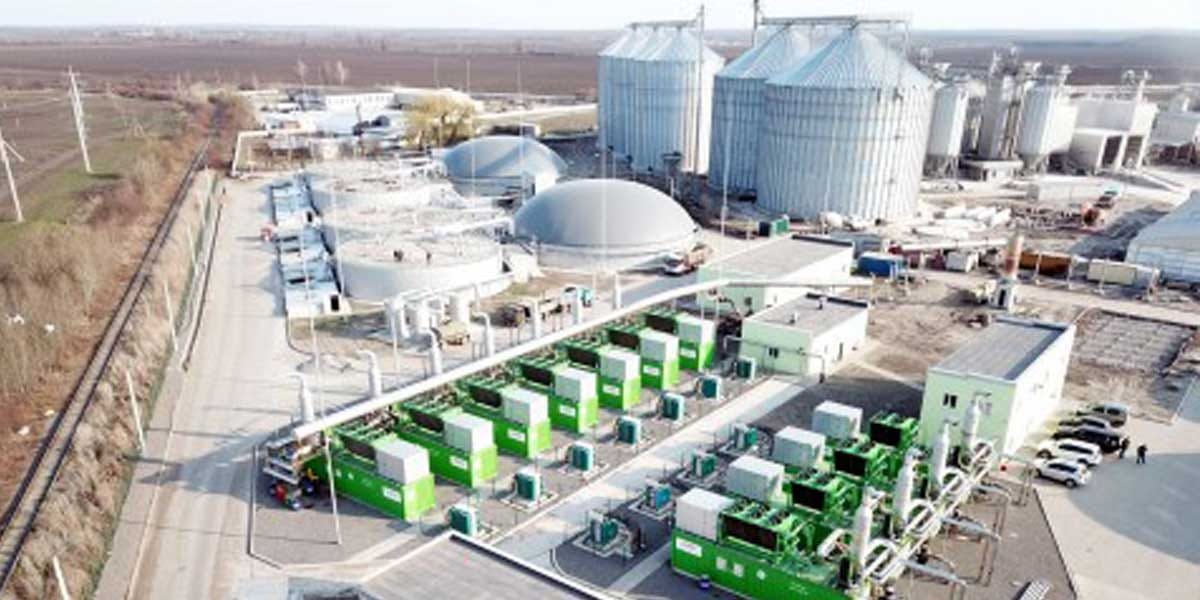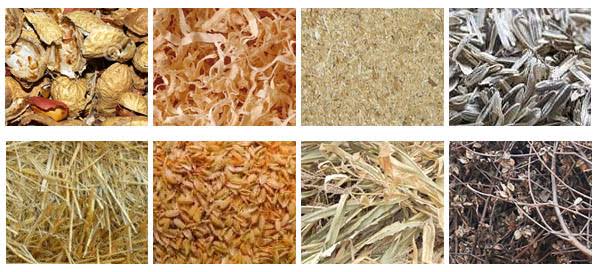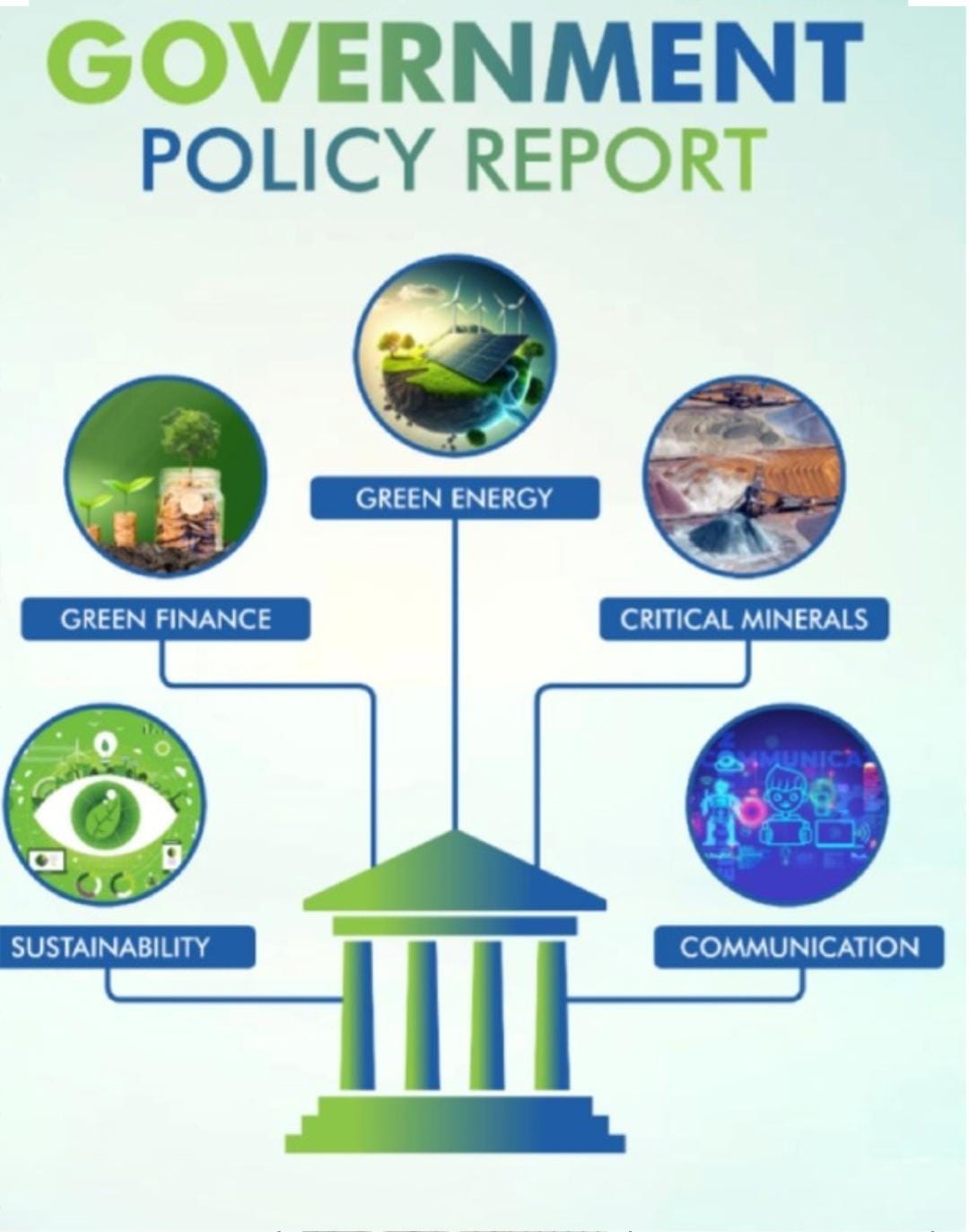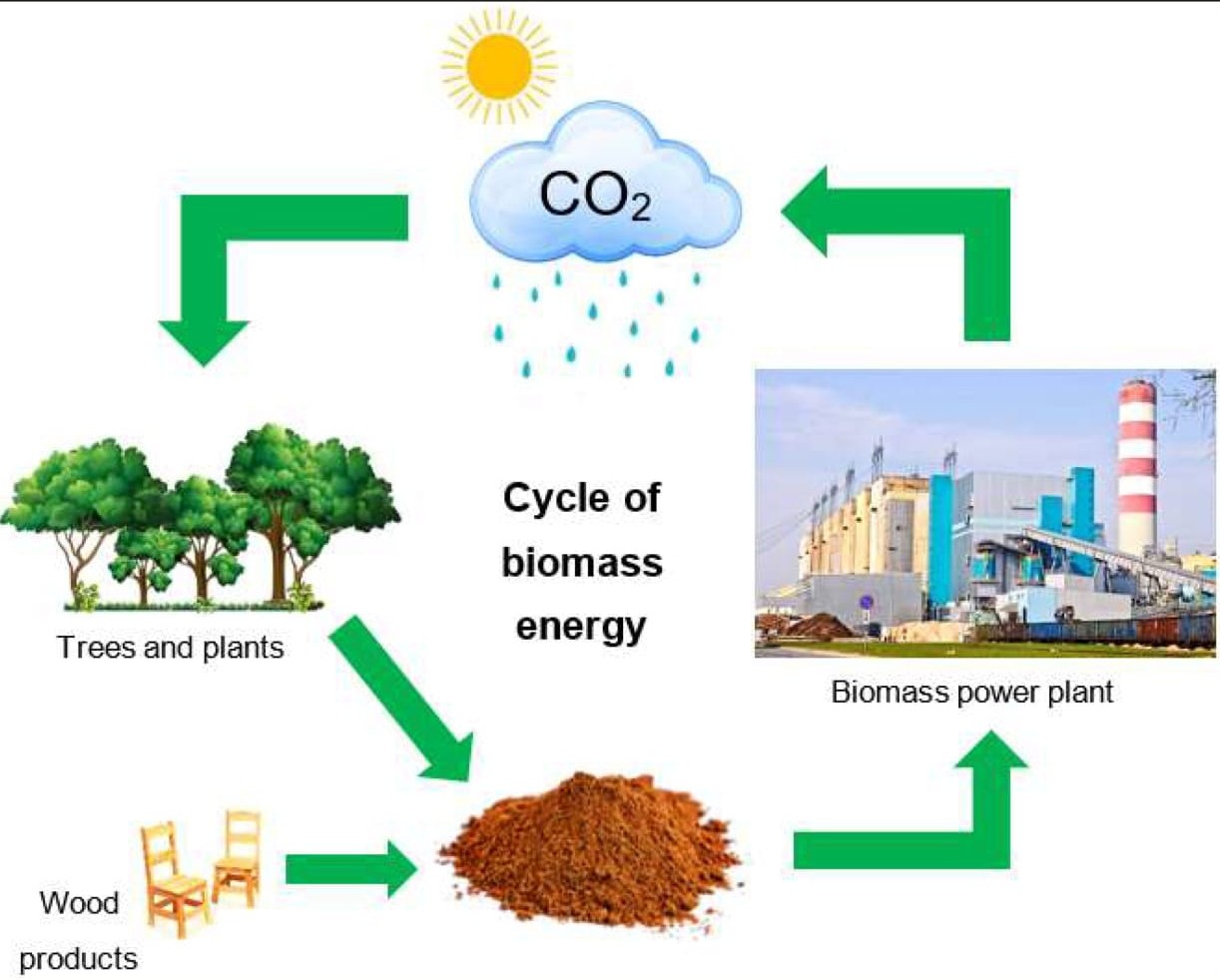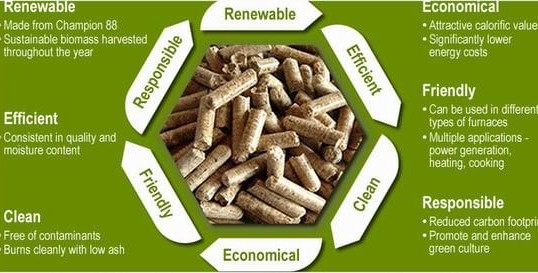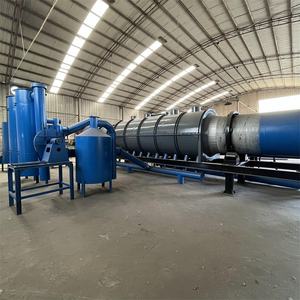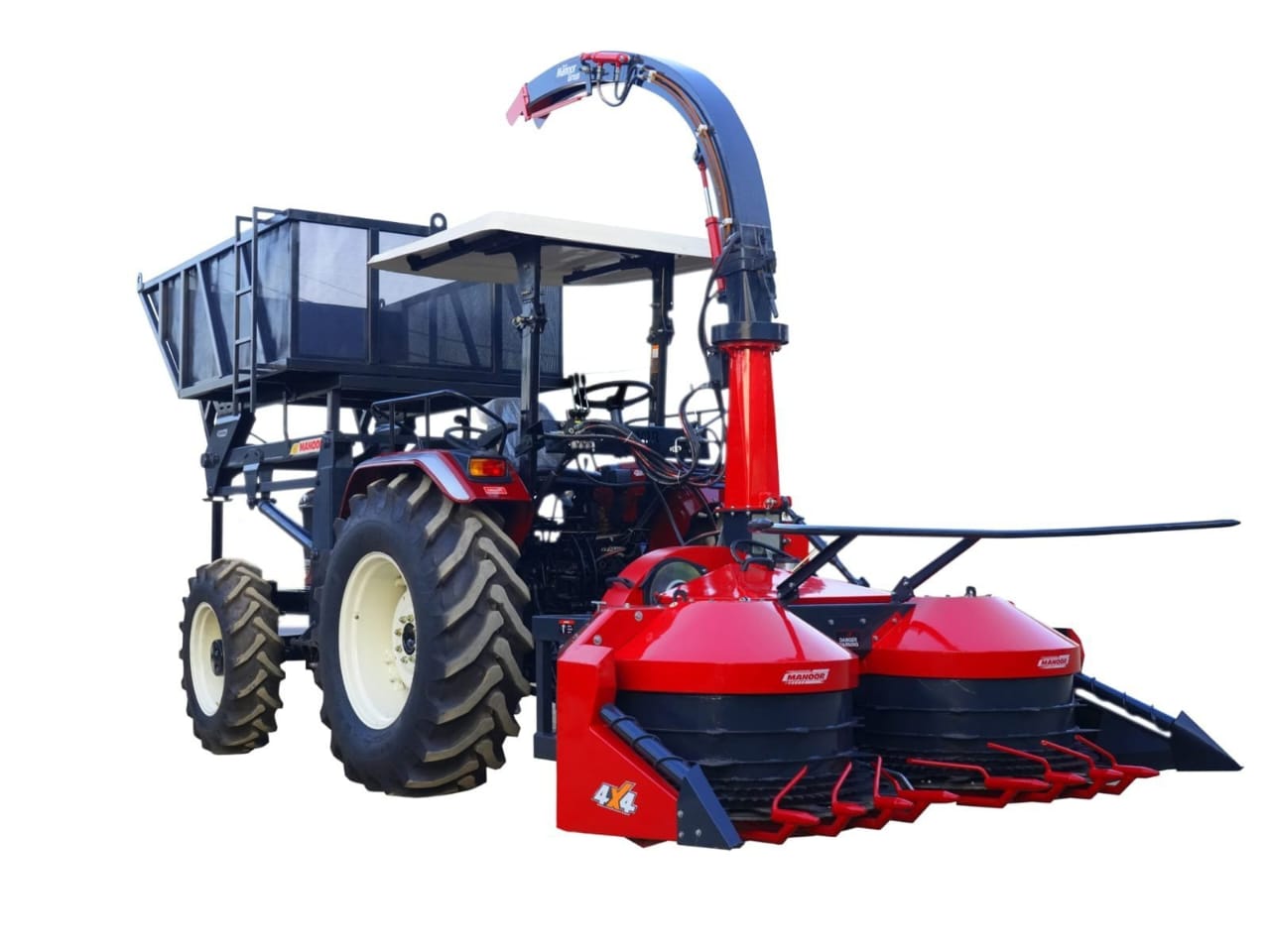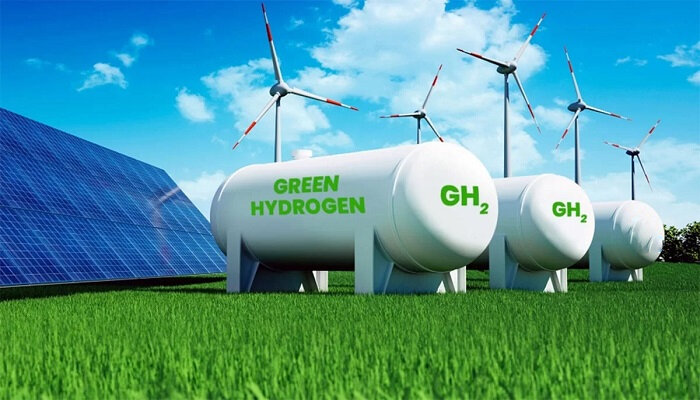Biomass Energy Technical
Description
Biomass energy is derived from organic materials like plants and animal waste, which can be converted to energy through processes such as combustion (direct burning for heat or steam), gasification (heating with limited oxygen to create syngas), and biochemical conversion (fermentation or anaerobic digestion to produce biofuels like ethanol or methane). The heat or gas produced can then be used to generate electricity by driving turbines, or the biofuels can be used directly for heat or transportation. Biomass is considered a renewable and sustainable energy source because the carbon released during its conversion is carbon that the plants absorbed from the atmosphere during their growth.
Agricultural waste: Residues from crops like corn stalks, rice hulls, and sugarcane bagasse.
Forestry waste: Wood chips, sawdust, and bark from logging and paper mills.
Animal waste: Manure from livestock operations.
Municipal solid waste: Organic components of household garbage.
Energy crops: Specific crops grown for their biomass content, such as switchgrass or algae.
Energy generation
Electricity: The most common method is burning biomass to create steam that drives a steam turbine connected to a generator.
Heat: Biomass is burned directly for heating purposes in homes, industrial processes, and for generating steam.
Biofuels: Biomass can be converted into liquid fuels like ethanol and biodiesel for transportation, or gaseous fuels like biogas for heating or electricity.
